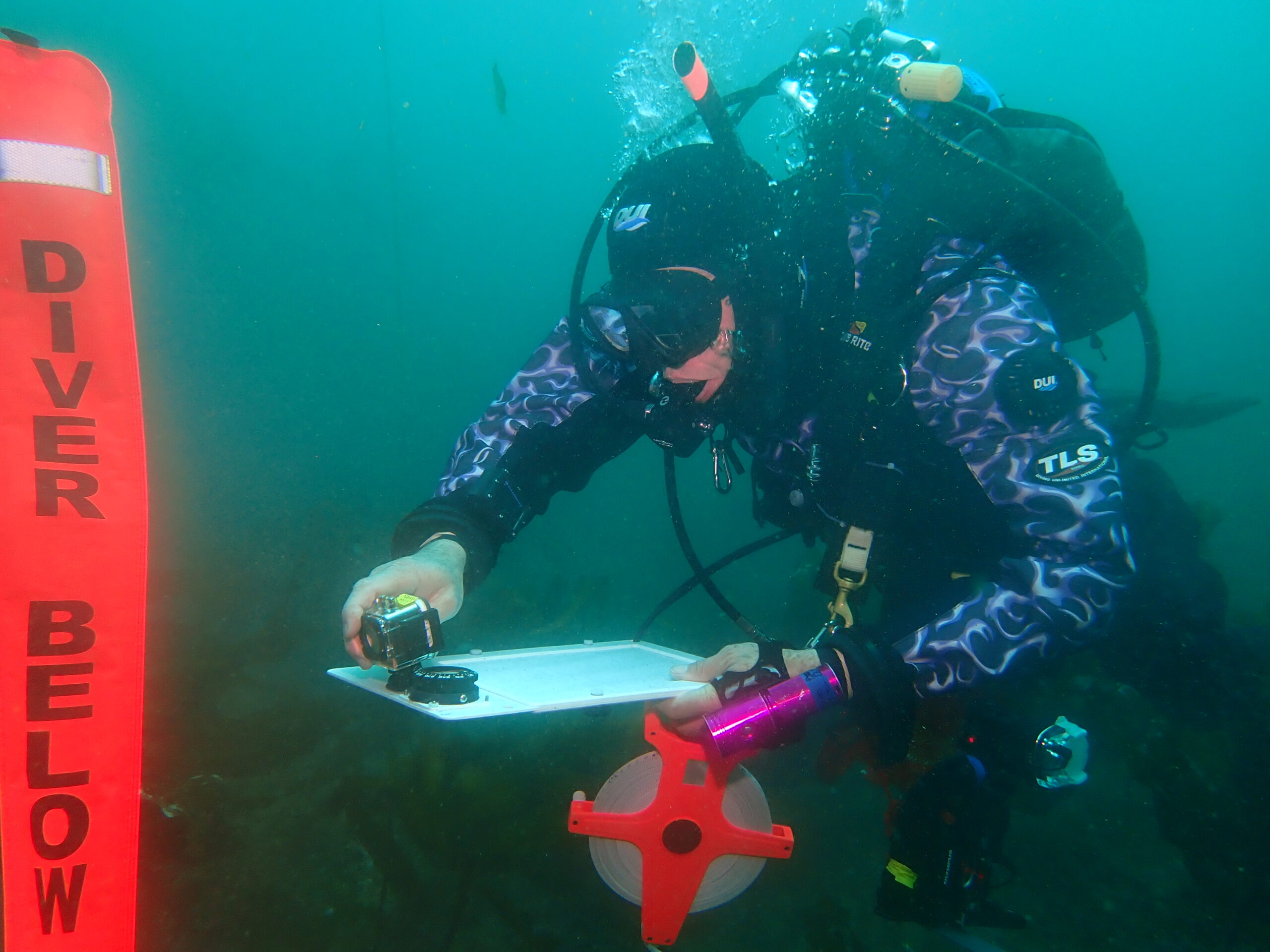Dive Log
Dive_Blog_2024_05_14_AS1
Purpose: Watching El Nino Underwater
14May2024
By: William Hagey
Point Loma – Acoustic Site 1 (AS1)
Vessels: Paul’s 31’ Whaler, The Celtic Knot
Topside Support: None
Divers: Ronan Gray, Jim Melrod, William Hagey and Paul Rahilly
Surface conditions: Short period 1 to 2 foot mixed swell, overcast.
Visibility: 25 ft
Temperature: 51 F
Current: None at the surface and none at the bottom
Dive Time in: 10:53 pm, 44 minutes
Depth Max: 59 ft
Purpose: TLC camera replacement, Transect video
Summary:TLC and miniDOT were placed. Still images and video were taken by W Hagey, Ronan, and Jim Melrod
Here’s a video made by Ronan Gray from this dive:
Dive 2 on May 14th at the AS1 site for the WENU Project. – YouTube
Here’s the video made from the time-lapse images from the previous two months:
2024 03 10Thru2024 05 14 AS1 A – YouTube
Equipment Notes: TLC NOAA02 with MiniDOT 142025 was placed. TLC PMRG1 with miniDOT, SN 913230 was recovered. The TLC was set at a 15 minute interval with and O2 readings were set for every 10 minutes. The UV-C light had fallen off partway through the deployment, because the aluminum screws had corroded away against the stainless steel bracket. (See photo.) There was a full set of photos from the TLC.
Habitat characteristics and surveys:
We had trouble finding the TLC. The good news is that we were able to explore this site more and we still had time to do the transect. We were all impressed at how beautiful this dive spot is. There is a lot of reef structure and a healthy and rich diversity of life. I remember diving this spot during the Acoustic study and at that time it was a thick macrocystis forest. Now it is a Pelagophycus forest.
Methods:
Since the boat was still moving as we passed the GPS waypoint, by the time the anchor was on the bottom we had moved about 70 feet off target. It looked like we needed to go north west of the anchor to find the TLC. The bad news was that it took a long time to find the TLC. The TLC was placed where the other one was. Jim got a nice video of this swap. Pterygophora_californica, Laminaria_forlowii, Foliose_red, and Pelagophycus_porra were also in the frame.
Transect: We swam a 50 meter transect quickly, because we couldn’t find the camera till the end of the dive.(Last time we did it at 300 degrees magnetic with my video SJ action cam. There was Ptaragophera and Pelagophycus scattered in the first half of the transect. Then for the second half of the transect there was a lot of growing Pelagophycus.
Abalone: I saw two live abalone, a pinto, I think, on top of one of the rocks near the anchor. I didn’t measure it or get a better location, than to say about 70 feet south of the TLC. I saw and got some video of a red that was hiding under a ledge. In the video you can see it reach out the front of its foot when I approached. So I feed it, on video. Due to the very limited time I didn’t make any other stops on this transect.
Dive Details: The boat was still moving as we dropped anchor, so the anchor was about 70 feet away.Jim and I connected the 30M transect tape to the anchor and swam at about 300 degrees, but didn’t find the TLC. I tried West and North East and finally found it North at a distance of about 100 feet; I got a glimpse of it just as I reached the end of the tape. It was great to have Jim’s help. A couple times he helped me straighten out the transect tape and handed things to me if I dropped them. Otherwise he was taking photos and videos.
Notes to future selves:
1) If we don’t think we dropped anchor at a good spot, pull anchor and try again. We would rather spend extra time on the surface with unlimited air.
2) When looking for the camera, it is probably best to leave the replacement TLC near the anchor and look. This is for two reasons, a) I can swim faster without it, and b) my hands will be able to do other things, like taking notes or pictures while looking.
The top image was from the previous deployment. The bottom is the TLC just recovered. The camera rotation was fixed and it is pretty much the same area.
The O2 and Temp graph is above and the bottom image shows the TLC when we found it. A bat star was on one of the lights an the UV-C light had fallen off because of corroded aluminum screws.

